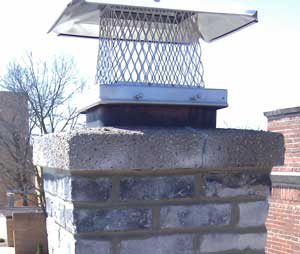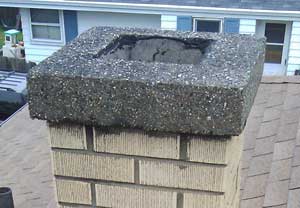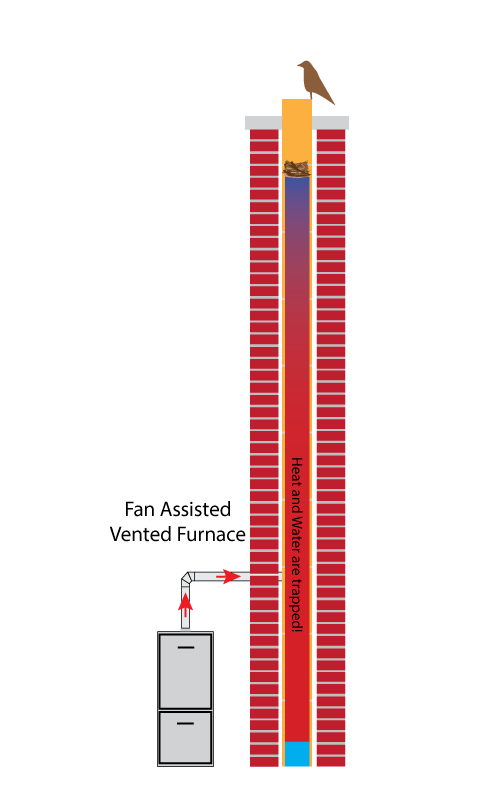Lack of a Chimney Rain Cap
Disclaimer:
These problems are meant to be examples of the common ways chimneys can leak from my past experiences. Any of these examples or none of these examples may apply to your chimney. Always contact a licensed chimney expert for your particular chimney leaking problems.

Many times the flue tile that exits out of the top of the chimney does not have a cover on it to protect it from rain and animals.
Flue rain caps are typically made from galvanized steel, stainless steel, copper, or clay. They are available in many different sizes to fit pretty much any chimney. Chimney rain caps can be installed on 1 flue tile or over mutiple flue tiles. If a standard flue cap doesn't fit, you can have one custom made for your chimney needs.
 When the flue does not have a cover on it, it allows water to drop drown to the base of the chimney in the case of a heating appliance flue. In the case of a fireplace, water drops down to the smoke shelf of the fireplace. The water can then pass through the masonry and deteriorate the back wall of the fireplace or the base of the chimney.
When the flue does not have a cover on it, it allows water to drop drown to the base of the chimney in the case of a heating appliance flue. In the case of a fireplace, water drops down to the smoke shelf of the fireplace. The water can then pass through the masonry and deteriorate the back wall of the fireplace or the base of the chimney.
Nesting Animals Create Dangers in Chimneys
When there is no screened rain cap on the chimney, some animals find chimneys to be a great place to build a nest. Animals such as birds, squirrels, raccoons, etc. can sometimes call your chimney home. This creates a very serious and potentially dangerous problem. When there is a nest in the chimney, the draft is seriously comprimised or worse, there is no draft at all! No draft means that the byproducts of combustion have no way to escape the house. This can lead to moisture problems, appliances that fail, CHIMNEY FIRES, EVEN CARBON MONOXIDE in the house. It is CRUCIAL that remove ANY NESTING from all chimneys!

Many times the first sign that a homeowner will notice is called efflorescence. Efflorescence is a buildup of the salts and minerals that were extracted from the brick and mortar and are deposited on the surface of the masonry when the water evaporates.
